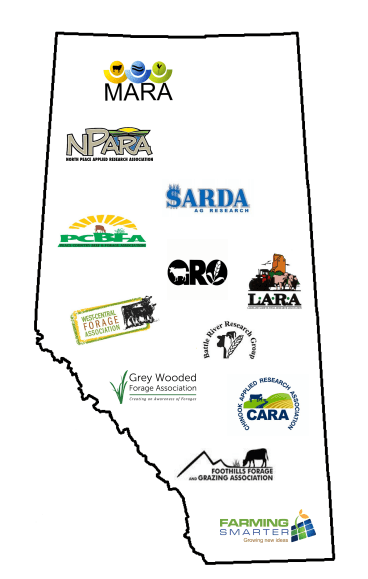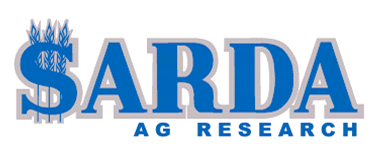Prepared by Shelleen Gerbig, P.Ag. SARDA Ag Research

Alberta’s twelve research associations cover the farming communities throughout the province. They are directed by local producers and are diverse in their projects and goals. While the associations are all different, they all work with primary producers to improve agricultural practices for short term and long term sustainability locally and throughout the province.
Research associations have their own specialties or areas of expertise. Many of the associations are specialists in forage, grazing and livestock management, many are specialists in crop production for seed and feed and some also have expertise in soils. Others are located in mixed farming areas and have programs that deal with several areas of expertise. All use workshops, tours, seminars, demonstrations, conferences, websites, social media and one-on-one consultations to extend information to the industry. Local producers and industry gain access to unbiased, tested information relevant to their area and conditions. These associations collaborate with each other and many other industry players to carry out programs dedicated to solving issues of their local producers.
In many cases, research associations provide that link between the pure science research of universities and governments to actual on-farm use by primary production. An example of this would be the mapping of the Canola genome done at the University of Saskatchewan in 2019, which will be used by industry to create new varieties with unique characteristics. These new varieties will be tested by research associations to determine their productivity under local conditions. If they successfully compete with the varieties favored in the area, these varieties may be selected for use by primary producers. Producers have the opportunity to see new varieties that may have the unique genetics to withstand blackleg, for example, produced under local conditions prior to making the investment into new seed. The quality of the research carried out by the associations is as high as anywhere else and many of the associations are producing peer reviewed scientific papers.
Research associations also provide that third party, unbiased, testing of new products. In the cropping world, each year new products and new techniques become available to producers. Some require huge outlays of money, but do they really give that return on investment and profit within the different regions of Alberta? New practices, diverse rotations, cocktail crops and soil health are currently a focus for many associations.
Many farming products and practices are being used in other areas in the world and could have benefits in Alberta, or are being promoted by agricultural suppliers but need to be tested under regional conditions. Research associations are able to do the testing locally and make recommendations on if the practice or product will potentially work on your farm. Producers are able to access this information and adopt those practices that have the most potential to be successful on their farms without huge financial or environmental risks.
Research associations benefit producers across the province by providing information and doing local research that emulates local farming practices. These groups are producer directed and answer many of the questions that are important to producers. Producers can access the locally produced research. Research institutions and industry look to research associations to understand the issues that are plaguing primary producers and to have their research tested under local production methods. May be it is fitting to say research associations are the “Missing Link”.
